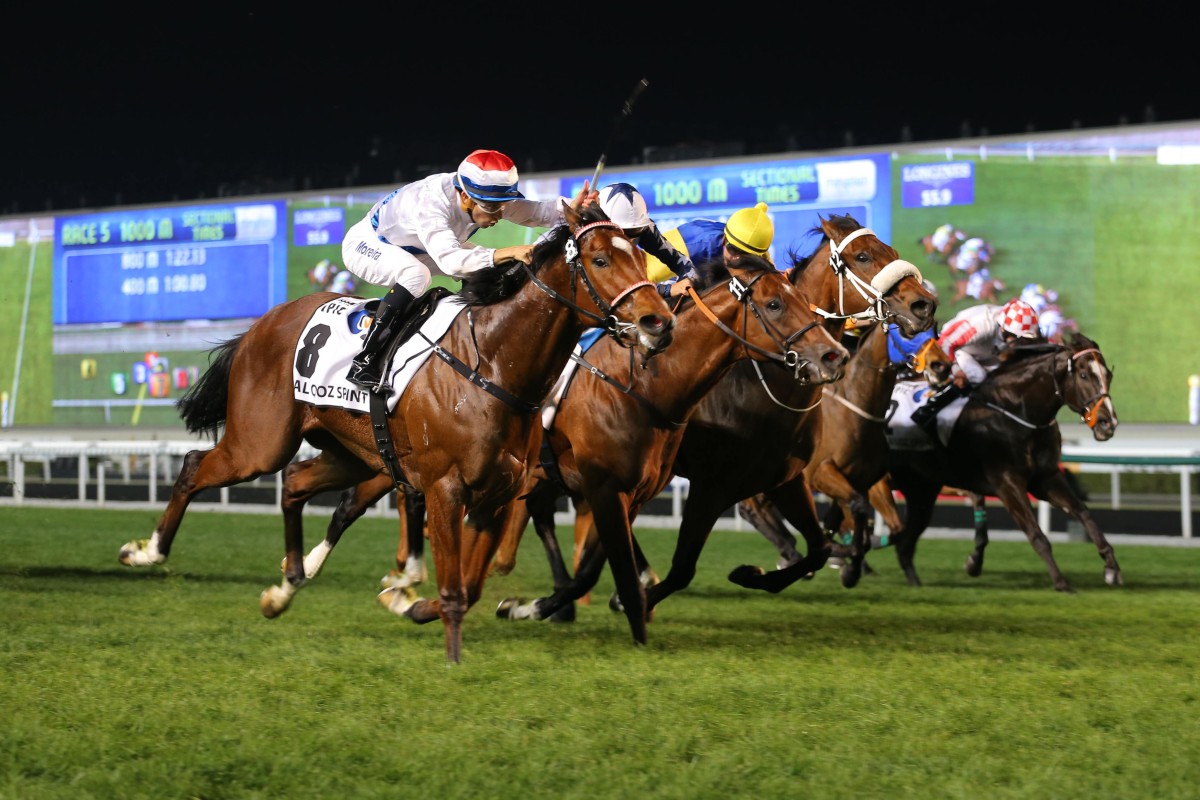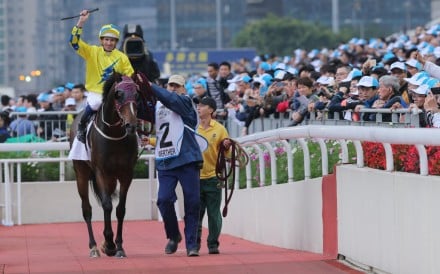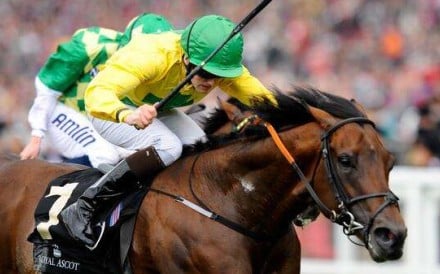Earlier this week, the UK Racing Post's Sam Walker wrote in his weekly "World Class" column that Hong Kong was likely to miss the best horses for the international races – and the fields, released yesterday, suggest he was on the right track.
Walker talked about "deglobalisation" in racing, the idea that so many alternatives are available to horses close to their home bases that there isn’t the need to travel there once was and instead, world championship meetings are now more regional titles.
Perhaps he is right, but a true measure of the worth of a horse’s form still gets its best test when they travel.
Last year, Lord Kanaloa established himself at the top of the world rankings through his Hong Kong Sprint win, while earlier this year it was the same for Just A Way in the Dubai Duty Free.

There are still other reasons to travel – better prizemoney, more suitable races, or if a breeding prospect, increased commercial viability – and for that reason, there will always be travellers. For instance, 14 Group One winners trained abroad are still making the trek to Sha Tin next month.
But horses cannot be in five places at once and so the talent pool is spread much wider than it ever has been before.
Still, the most accurate way to determine the elite, the best horses in the world – both in terms of quantitative evidence and as a marketing tool – is to get the top horses from each country in the one place at the one time for a world title bout, something which is seemingly impossible these days.
The Breeders' Cup, marketed as the world championships of racing in the same way that the Americans use the World Series for baseball, is more a Ryder Cup, featuring the best of the United States and Europe with the occasional runner from elsewhere.
And Hong Kong's claim to be the turf world championships is tested by its position on the calendar – with most northern hemisphere horses out for the year – and the general strength of the four races.

The closest thing to a thoroughbred world championship meeting is the Dubai World Cup card, and even that is questionable. The timing is awkward with European horses just starting their season, and Australian and New Zealand horses engaged in their own rich events at home. And the Tapeta surface has ensured not only some quirky results, but it has turned the Americans away in droves. With the switch back to dirt this year, perhaps it will be a different story.
Nevertheless, the only way to have a true world championship meeting would be to have it in a different jurisdiction each year - one year in Hong Kong, the next Dubai, then Australia, the United States, France, Japan, the United Kingdom, and so on.
Something like the Breeders' Cup switching tracks each year (even if five of the last seven were held at Santa Anita, with the last two at Churchill Downs, but that’s beside the point). In fact, the Breeders’ Cup called for bids from overseas tracks in 2007 in an attempt to turn it into a true global event, but that fizzled out quickly. Still, there’s hope that it could happen in the future, right?
Sadly, it's one of those fanciful ideas which would work in some racing utopia, but in reality it is all but an impossibility. Here’s why.

The politics
Which country would want to give up its own prized event to host a one-off meeting?
The best time of year for a world championship meeting would be at the end of the northern hemisphere racing season, but the October to December timeslot is already full up with the Arc meeting in France, Champions Day in the United Kingdom, the Melbourne spring carnival in Australia, the Breeders’ Cup in the United States and, of course, the international races here.
None will want to sacrifice their own premier event, and even if there was a rotating global meeting, what’s to say each country would choose to send their best horses? It might be a case of relying on the B-graders to hold up national pride, while the stars stay to tackle their own meeting.
There are too many competing agendas, too much self-interest and self-promotion to put it all aside to work as a global body.
Take Sydney’s The Championships. After the much publicised falling out between Racing NSW and the Hong Kong Jockey Club over the Chris Munce case, Sydney’s administrators would much prefer to have their own showpiece event to clash with already established races – like the Audemars Piguet QE II Cup – rather than working together to form a logical path. Same with the Doncaster Mile and Champions Mile, as suggested by the SCMP's Michael Cox in a blog earlier this year.
So the talent pool is split again.

The lack of global consistency
A true world title would have to feature races on both turf and dirt to be worthy of the title – to truly determine the world’s best horses in certain divisions.
The only problem? Most jurisdictions either don’t have dirt tracks, or they do in far flung places and don’t feature prominently.
Take Australia. Would you run the turf races at Flemington and then let the dirt horses go around in the middle of nowhere, somewhere like Broken Hill?
What about the United Kingdom, where there are no dirt tracks? Let them go around on the Kempton polytrack instead?
So the idea of a true rotating world series for both turf and dirt horses is already dead and buried.
Even if it did somehow work, what about the different rules between countries?
Take the Bayern incident in the Breeders’ Cup Classic. What would happen elsewhere if a horse came out sideways and knocked over a couple of rivals, one of which finished fourth, three lengths away?
In most countries nothing would happen. The United States was borderline, with California stewards throwing out the Bayern inquiry but sparking a great deal of debate. The only country where it is almost guaranteed that Bayern would have lost the race is France, which takes down any horse which doesn’t maintain a straight line throughout.
Different rules for the one event wouldn’t work.

The logistics
The Jockey Club’s chief executive Winfried Engelbrecht-Bresges has been one of the big advocates in making progress in terms of movement of horses, but further steps would still need to be taken to make this idea a possibility.
At this stage, South African horses would be unable to take part, unless they were part of Mike De Kock’s travelling string and have already endured the arduous quarantine process.
Then there are varying quarantine protocols around the world, including the very strict Australian procedures which require horses to do two weeks in their home country before doing two weeks upon arrival down under.
It’s unlikely that the world will be on the same page any time soon in regards to horse movement.
It would be a great spectacle, but sadly, it is as fanciful as racing on the moon. Or perhaps as fanciful as a sustainable racing structure emerging in mainland China anytime soon.





















